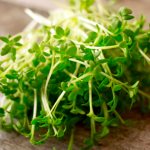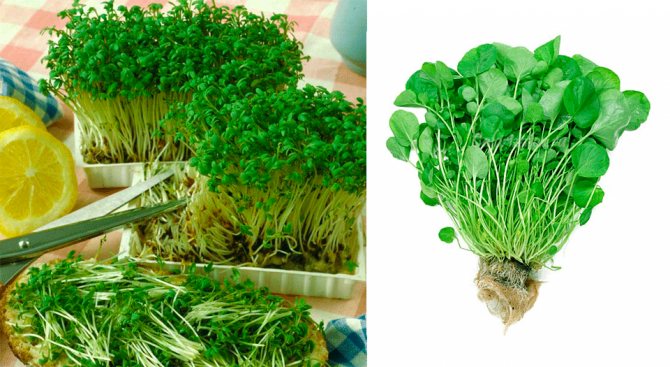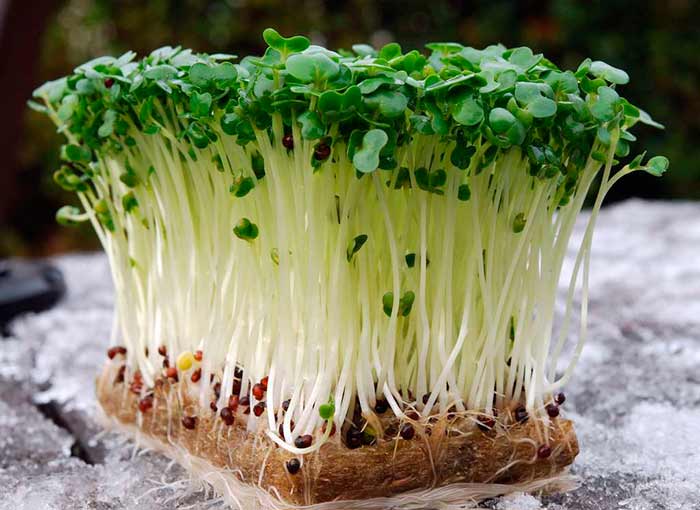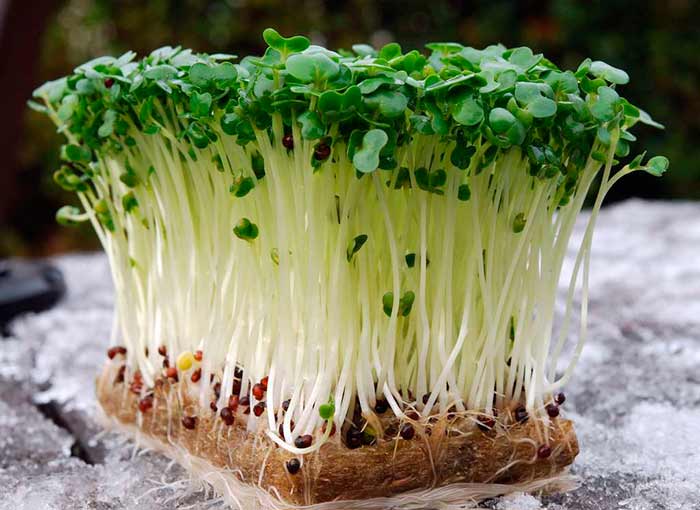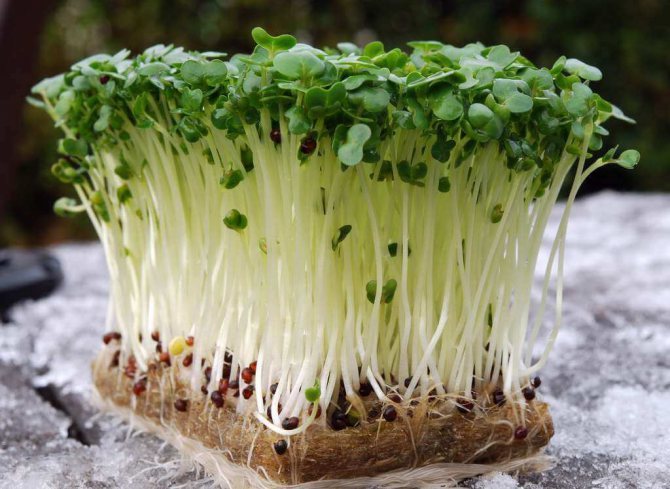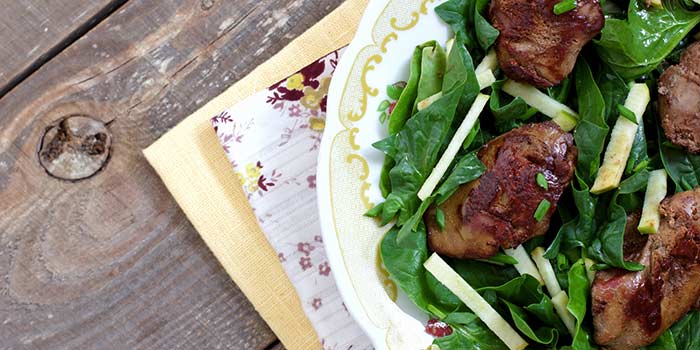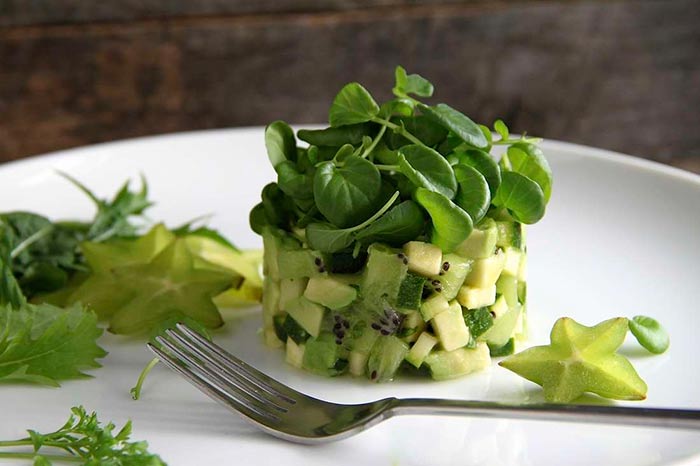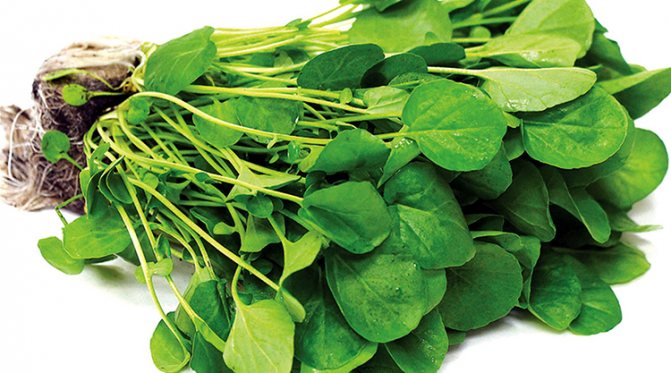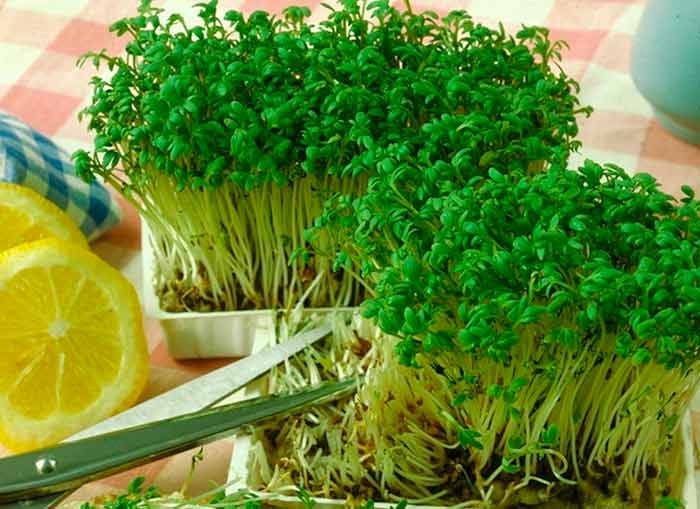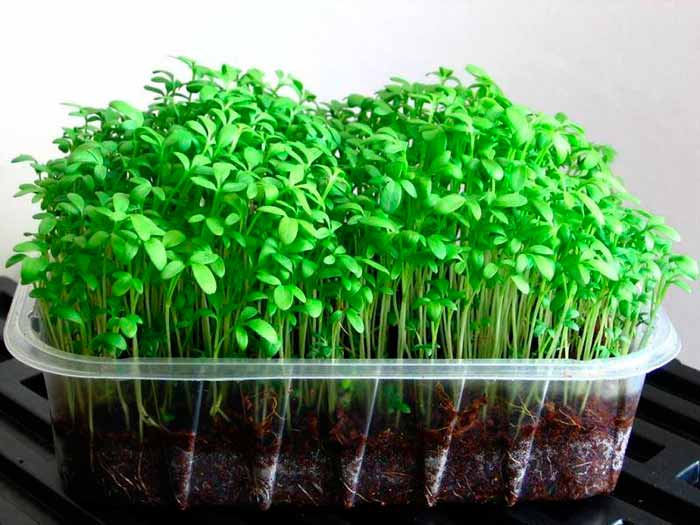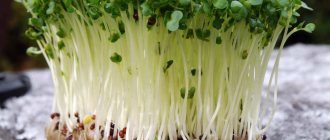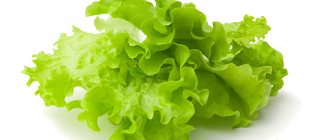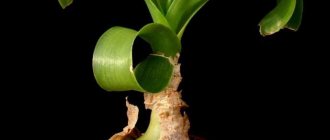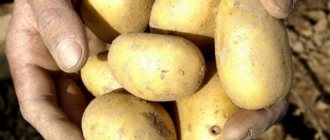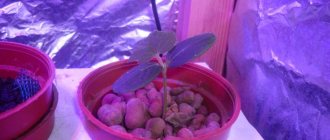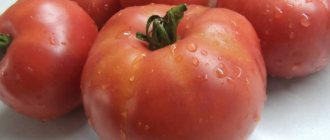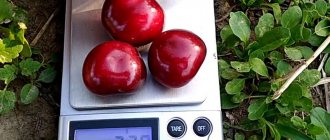Anyone who likes to supplement their diet with juicy greens will like watercress, which is very popular not only due to the high content of useful elements in the foliage, but also due to its unpretentious cultivation. You can get a fresh crop even on the windowsill, using different sowing options.
Description of watercress
This plant is herbaceous, it can be one and two years old. It is classified as dietary.
Watercress has several names: watercress, bedbug, tsitzmat. It belongs to the Cruciferous family, the Klopovnik genus. It is native to Iran, but also grows naturally in Egypt, Ethiopia and Asia. It was known in the camps of the Mediterranean basin in the period of ancient times, where the first successful attempts to cultivate it arose.
The height of the bush can be from 30 to 60 cm. Its root is simple. The leaves, like the shoots, are colored in a light green tint. Flowers can have different colors, they are: white and pink. After abundant flowering in June-July, pod-like fruits appear. Prefers to grow in sunny or slightly shaded areas. Likes neutral or slightly acidic soil with a high nutrient content, watering in moderation. Propagated by seeds.
There are several subspecies of the plant: sowing, with whole leaves and with curly ones. They all differ from each other in appearance.
So curly watercress has a half-raised rosette, and its leaves are extremely unusual, carved. The diameter of the bush is about 15-17 cm. The most common varieties of this variety: "Azhur", as well as early and mid-ripening.
In a salad with whole leaves, the rosette is flatter and larger in diameter and can reach 20 cm. It can grow up to 5-6 cm in height. This variety includes varieties of late ripening, for example, "Ducat".
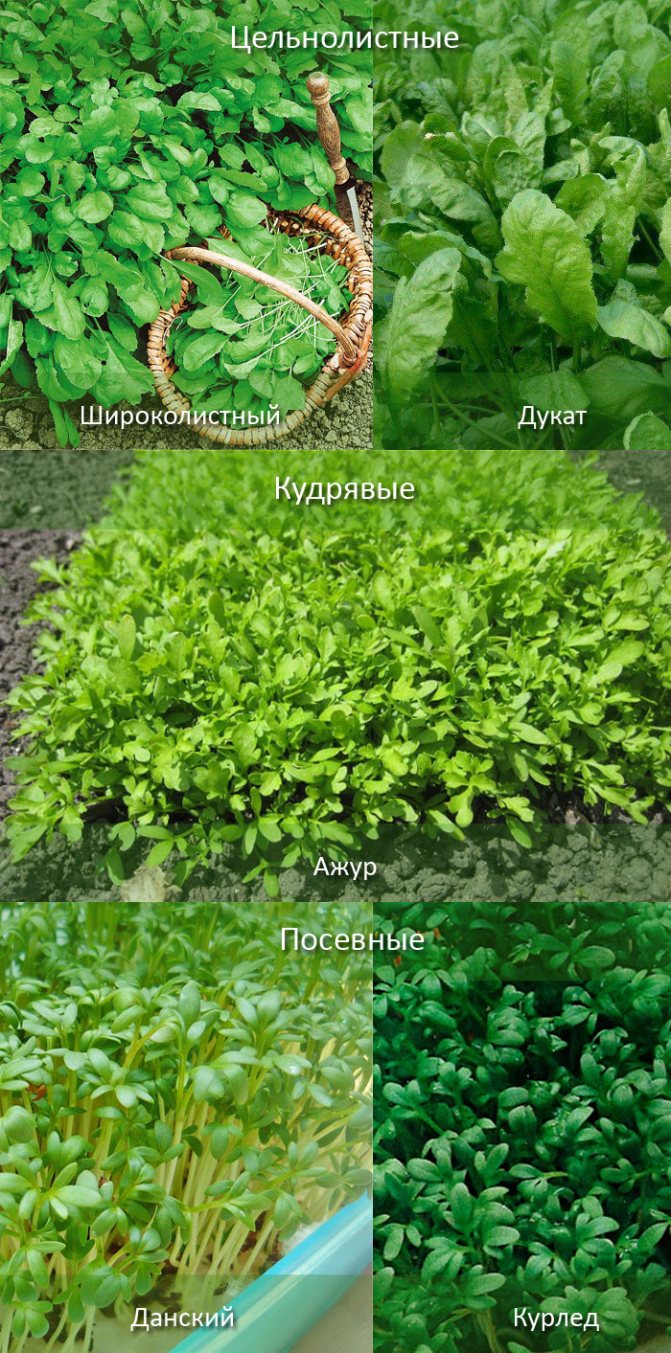
Types of watercress
The watercress is a cross between the other two types. It has a large semi-raised rosette, coarse leaves are weakly dissected. It belongs to the varieties with the highest early maturity. For example, "Fun", "Dansky".
Culture properties
Radicio salad - growing
The green mass of this annual herb contains many useful substances:
- vitamins A, D, E, K, PP, group B;
- ascorbic acid;
- various trace elements;
- essential oils;
- flavonoids and some other active substances.
The benefits of eating such leaves are undeniable:
- stabilizes blood pressure;
- improves the functioning of the heart and blood vessels;
- helps to remove toxins and toxic substances;
- helps to establish the work of the endocrine system;
- watercress is included in the menu of overweight people due to the low calorie content of its foliage;
- the plant should be consumed by pregnant women, since folic acid is present in its composition;
- improves sleep, relieves stress, helps relieve depression;
- prevents the occurrence of cataracts and a number of other eye diseases.
The usefulness of this herb for human health is undoubted, it is also actively used in cosmetology, there are many recipes from the green mass of watercress to improve the condition of hair and skin.
But this plant is also capable of doing harm. It should not be eaten by people with the following medical conditions:
- gastritis;
- colitis;
- with peptic ulcer;
- hypotension;
- kidney disease;
- with frequent urination;
- preschool children.
For the first time, you should not "lean" on this herb - you should eat a little and look at the body's reaction, since a person may have an allergic reaction to the components that make up the watercress.
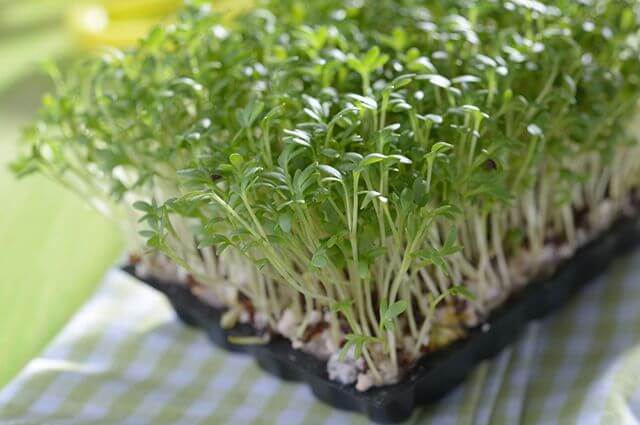

Growing
Types and varieties of watercress
The table shows the most popular varieties.
| View | Variety | Features of the |
| With whole leaves | Ducat | Differs in high early maturity. From the moment the first shoots appear to the onset of ripeness (technical), an average of 2 weeks pass. The maximum length in height is 15 cm, diameter is 25 cm. The number of leaves varies from 8 to 16, they are large, painted in a light green shade. They have a pleasant mustard flavor with a slight twist. |
| Broadleaf | Refers to varieties of medium ripeness. You can eat it 1 month after planting. It grows very quickly, reaching a length of 12 cm. The leaves are very delicate, green in color, have a pleasant spicy taste. They are used in the preparation of dishes from meat, fish, and also added to salads. | |
| Curly | Openwork | A variety of medium early ripeness. Ready to use in 3-4 weeks. It grows in height and width up to 25 cm. It can be grown both in open ground and in greenhouses and at home. |
| Curly | It also belongs to medium early varieties, but reaches ripeness later by 40-45 days from planting. Bushes are slightly smaller and reach 20-22 cm in width and height. All parts of the plant can be used for food, including young shoots until the arrows appear. | |
| Sowing | Fun | Belongs to varieties of early ripeness, suitable for growing at home, in greenhouses and open field. Used as a seasoning and to add spice to salads. |
| Dansky | The earliest variety of all - ready to eat within 10 days from the moment the first shoots appear. Resistant to short-term cold weather, which makes it indispensable for growing in Russia. It has a high content of iron and its salts, vitamin C, calcium and iodine in its foliage and stem. | |
| Kurled | Also early maturing, has an increased yield. Has a rather pungent taste, similar to mustard. Ready to eat 17 days from germination. |
Application in cooking and cosmetology
Watercress has long been used for food, this is due not only to its medicinal effect, but also to its unique culinary qualities. The plant tastes spicy, similar to mustard or horseradish, but the shade is fresher and lighter. Due to its ability to spice up dishes, watercress is used in cooking to prepare salads, first courses, and snacks.
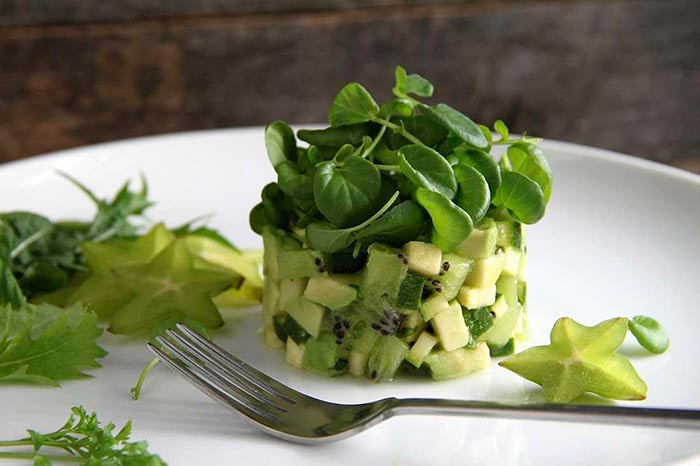

To get a closer look at the culinary purpose of the plant, below are popular recipes for dishes with this ingredient.
| Name | List of products | How to cook |
| Vitamin salad with watercress | Carrots - 100 g; Watercress - 200 g; Honey - 1 tbsp. l .; Olive oil - 2 tbsp l .; Lemon juice - 1 tbsp l. | 1. Grate carrots, add salad. 2. Season vegetables with a mixture of lemon juice, honey and oil. If desired, add your favorite spices, sprinkle with sesame or pumpkin seeds |
| Watercress and shrimp puree soup | Shrimp - 0.5 kg; Garlic - 2 cloves; · Watercress - to taste; Butter - 25 g; Shallots - 3 pcs .; Almond petals - to taste; Cream (15%) - 50 ml; Broccoli - 300 g. | 1. Fry finely chopped onion in butter. 2. Send broccoli sprigs to the vegetable, add water (so that it completely covers the product), simmer until tender. 3. Using a blender, turn the broccoli into gruel, pour in the cream. 4. Fry garlic and shrimps (peeled beforehand) in vegetable oil. 5. Serve broccoli puree with shrimp and garnish with watercress and almond petals. |
Watercress and arugula, being close relatives, go well in dishes. Such products include "green" spices: mint, parsley, marjoram, hops-suneli. Microgreens are revealed in vegetable dishes, as an addition to meat or fish (fresh).
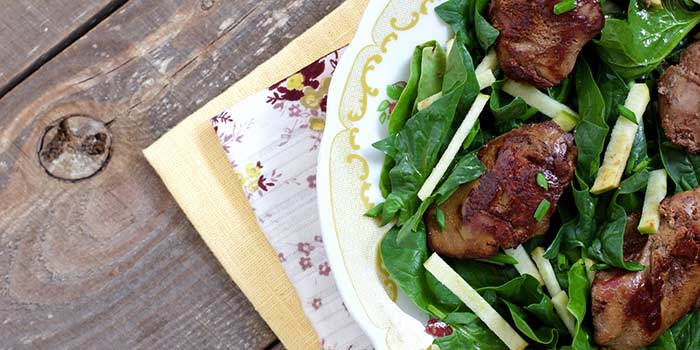

Culture is irreplaceable in cosmetology. The powerful cleansing and regenerating effect makes herbal products beneficial for women of all ages. Examples of masks are described in the following table.
| Name | Appointment | The constituents |
| Mask for oily skin | Mattifies, normalizes sebum production, tightens pores | Greens (grated) - 2 tbsp. l .; Honey - 1 tsp; Protein - 1 pc. |
| Purifying mask | Cleans, rejuvenates, soothes | Olive oil (cosmetic) - 1 tsp; Lemon juice - 5-10 drops; Greens - 8-10 leaves |


Method of applying masks: mix the ingredients, apply on the face, wash after 10-15 minutes.
Cress growing methods
There are several different methods of growing watercress: on a windowsill, in a greenhouse, and outdoors. But before you start planting, it is important to prepare the soil and seeds.
This type of herbaceous plants is one of the most unpretentious in terms of growing conditions. It can even sprout on a simple paper towel dipped in water. But it is still worth observing some rules so that the harvest will please with its abundance:
- When planting on a windowsill, it is worth purchasing land in a specialized store, and not taking it from a personal plot. This is due to the fact that the soil may contain cruciferous flea larvae and eggs, which is a pest and damages watercress.
- When planting in open ground, you cannot stop your attention on the beds where cabbage or root crops used to grow (carrots, beets, garlic, etc.). A good harvest will not work, it is better to choose another place.
After the planting site has been chosen, attention should be paid to the preparation of the seeds. They are large in the plant, slightly elongated and resemble mustard. They are placed in a container and filled with water, just above the surface. Soak for 10-15 hours. After this procedure, you can start sowing.
Planting watercress for seedlings
It is not always possible to plant watercress outdoors, but it is very easy to do it in an apartment at any time of the year. In this case, you need to sow additionally once every 7-10 days. To do this, prepare pots with soil with a height of 8-10 cm.Then seeds are immediately planted in the ground, or they can be germinated on moistened cotton wool or a paper napkin, and then transferred to the prepared container.


Growing watercress from seed step by step
For this type of cultivation, it is not necessary to use a separate container, watercress feels great next to other vegetables and herbs. Any varieties of aquatic varieties of this plant are well suited, for example, Dukat, Moscow Region.
Growing watercress on a windowsill
It is better to plant seeds from the second half of September, at this time the heat leaves, but the daylight hours are still long, which will not allow the plant to grow sharply and lie down.
A container for growing is specially prepared in advance, cotton wool or a nutrient substrate 2-4 cm thick must be laid on its bottom, sawdust or a layer of earth for seedlings or any indoor plants is poured on top. Then the seeds are laid and sprinkled with soil 1.5-2 cm. Gently watered, covered with glass, hardboard or foil and removed to a dark place until the first shoots appear.
Watercress germinates best at a temperature of + 5 ... + 6 ° C, in this range it will develop a strong root system. After the formation of the first leaves, the covering material is removed and the container is moved to a warmer place with a temperature of + 15 ° C.
It is important to put the pot in partial shade and be sure to turn its different sides daily.An insulated balcony or loggia on the north side of the house is well suited for this growing method. It is worth paying close attention to watering the plant and preventing the soil from completely drying out. Spraying with a spray bottle will have a beneficial effect on the greenery. The salad is fed with complex fertilizers, superphosphate or "Rainbow".
Even if the daylight hours become short, the plant does not need additional lighting. You can eat it when the bushes reach a height of 8-10 cm. To do this, they are carefully cut off from the soil with sharp scissors.
Growing watercress outdoors
Sowing outdoors can be started from the second half of April to mid-May. It is important to take into account not only the time frame, but also the temperature conditions: the soil must thaw at least 4 cm, and the air must warm up to + 6 ... + 8 ° C. If sowing is planned before winter, it is important to carry it out after the first frost, otherwise the seeds will die.
Slightly acidic or neutral ground is better.
It is not worth planting after the cabbage or next to it, a good harvest will not work, since the watercress can become infected with the cruciferous flea from it.
It is necessary to prepare the garden bed on the eve of the fall: it is dug up and superphosphate or manure is added, which has already been overfilled. In the spring, just before planting, you can additionally fertilize with ammonium sulfate.
On loosened soil, furrows are made with a depth of 0.5 ... 1 cm, with a distance between them of 10 ... 20 cm. The emerging shoots must be thinned out, leaving a radius of 10 cm around each bush.
It is better to plant in partial shade, since in the beds with a lot of light, the plant begins to quickly release arrows and becomes unsuitable for human consumption.
Water the watercress regularly depending on the drying out of the substrate. After moistening, you can gently loosen the soil between the bushes. You need to be extremely careful with feeding after the emergence of sprouts, since the ripening period of the plant is very short and the nitrates that have got into it simply cannot be processed and instead of the benefits of using it, harm will result.
Growing watercress in a greenhouse
The technique of growing this plant in a greenhouse does not differ from that in the open field. Can be planted earlier in spring than in open ground, for example, with long spring frosts. It is only required to regularly ventilate by letting in fresh air.
Care rules
Watering
In the case of a complete absence of precipitation, the plant needs to be watered daily, especially in the summer. Watering is not needed during the rainy season. In cloudy weather, moderate watering 2-3 times a week is enough.
It is important not to allow an excess of moisture, because this makes it very fragile and vulnerable to decay and fungal diseases. Afraid of windy weather
Plus, the taste of the salad may change. After watering, you need to carefully loosen the soil and remove weeds in a timely manner.
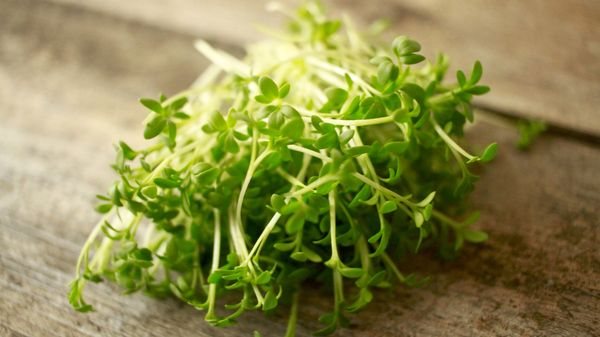

Too much moisture can change the taste of watercress
Top dressing
Fertilizing after planting is not worth it. The ripening period of the culture is very short, therefore, if there are nitrates in the top dressing, they do not have time to be processed. Because of this, it is better to fertilize the soil before planting, and even better to prepare the site in the fall.
If, after sowing the seeds, you cannot do without top dressing, then use only the minimum concentration. After harvesting greenery in the same area, it is better to plant potatoes, cucumbers, onions, tomatoes or legumes.
Disease prevention
Diseases and pests infest watercress in very rare cases. This is due to the rapid ripening of the crop.
The only problem can be waterlogging of the soil. This threatens with blackleg infection or rot. In such situations, the only way out is to re-sow the crop. Fungicide treatment will be hazardous to health.
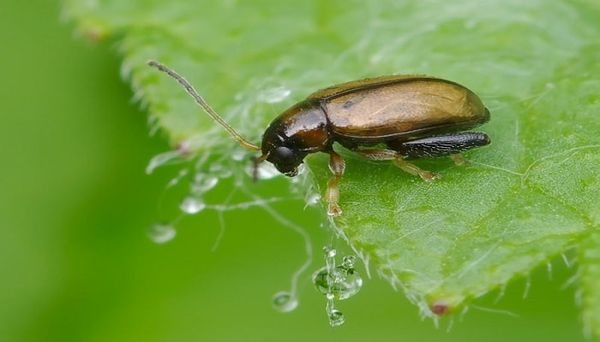

The cruciferous flea is a dangerous pest of watercress
Among the pests, the cruciferous flea is considered dangerous.To get rid of it, the plants are treated with tobacco broth. As a prophylaxis against pests, crop rotation and respect for the distances between plants are used.
You can not eat the plant if you have serious problems with the kidneys, gastrointestinal tract, gastritis or thyroid diseases.
Features of watercress care
There are not many basic rules for caring for this plant. It is important to monitor timely and sufficient watering, but at the same time it should not be excessive.
If you pour the plant, it may die, this is especially important when growing lettuce at home, since excess moisture simply has no place to go from a limited container.
You also need to choose the right place for planting, so that it is not too hot and sunny. This applies to both apartments and open ground.
Composition and calorie content
Watercress contains a huge amount of beneficial vitamins and minerals that are not found in any other greenery.
Salad composition - complex:
- from carotene;
- vitamins A, C, PP, S, K;
- almost complete composition of B vitamins;
- large amounts of magnesium, iodine, iron and calcium;
- proteins and carbohydrates;
- essential oils.
Greens are composed of minerals and vitamins that allow them to be used not only for culinary purposes, but also to improve health.
Watercress is a great choice for dieters looking to lose weight. This can be explained by the fact that the calorie content of the salad is extremely low and is only 32 kcal, which is good news.
Watercress pests and diseases
Due to its rapid growth, watercress most often simply does not have time to be attacked by pests or diseases.
However, sometimes situations arise when he suffers. The table below summarizes the most common problems caused by various causes.
| Problem | Manifestation | Remedies |
| Blackleg Rot | There is a blackening of the stem, and then of the leaves with increased soil moisture. | Destruction of diseased bushes. It is not recommended to plant in the same place in the coming summer. |
| Cruciferous flea | The leaves of the plant are gnawed through. | Treatment of a plant with tobacco dust or its decoction. To prevent re-infection, it is worth moving the watercress beds to a remote location from the Cabbage family. |
Landing rules
Watercress can be successfully grown not only in the beds, but also in a bowl on the window. Planting, growing and caring for it is so easy that any independent child can handle it.
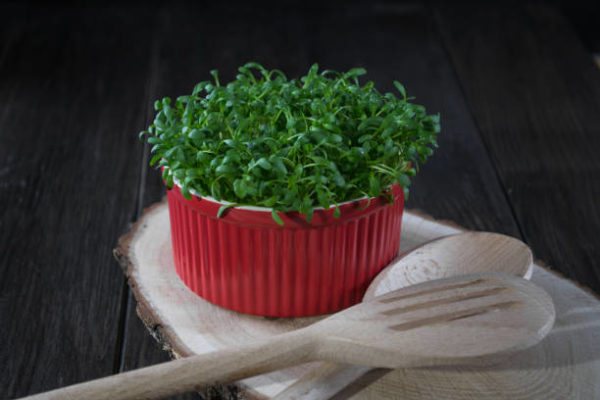

Watercress on the windowsill is not only useful, but also beautiful
Soil selection
Watercress is one of the most unpretentious plants that grows literally in any soil and even without it. "Window-gardeners" grow these mouth-watering greens on ordinary medical cotton wool or food paper napkins. Experiments were carried out on growing plants in different conditions:
- land with water;
- cotton wool;
- just water;
- cotton wool poured with water and sprinkled with earth.
Lettuce grows best in the last planting mix.
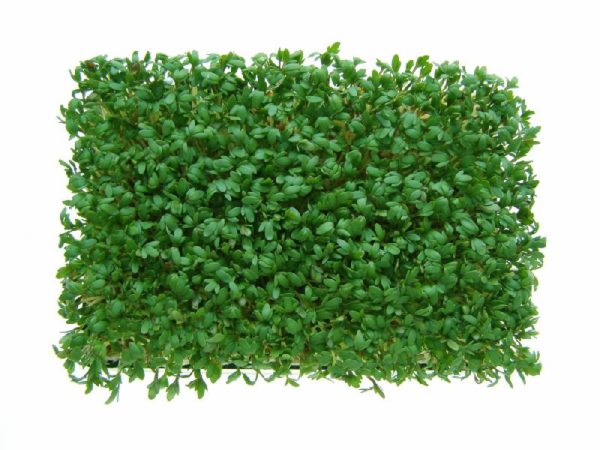

Watercress grows in any soil and even without it
Lettuce grows well in normal, moderately moist soil, but the soil must be purchased at gardening stores. If you take the land from the garden, there is a high probability that it may contain eggs of a cruciferous flea - thunderstorms of all plants belonging to the cabbage family. And watercress also belongs to it.
If you plan to sow this plant in the garden, then choose the beds where potatoes, carrots, onions, garlic and other root vegetables grew. You cannot sow watercress after any cabbage crops.
Preparing seeds for planting
Planting any plant begins not only with preparing the soil, but also with the seeds. In watercress, they are quite large, in appearance they are similar to mustard, but oblong.
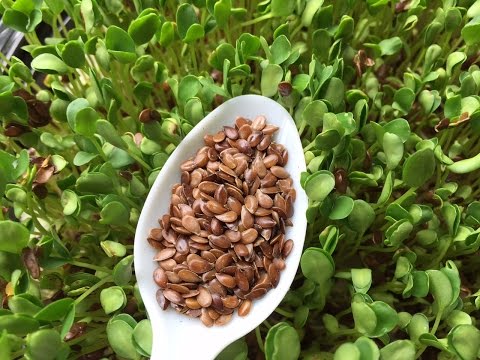

Watercress seeds are large and easy to sow
In order for the seeds of watercress to quickly swell and hatch, they must be placed in any small container, filled with water, which should barely cover the planting material. They are left in this state for 11-15 hours.
When is the best time to sow watercress
In an apartment, the plant can be grown almost all year round. The best time for this is the cold months, since watercress is a cold-loving plant, for which the optimum temperature is + 15 ° С... It is difficult to provide such conditions in summer. And at higher temperatures, the seedlings quickly stretch out, turn pale and lodge.
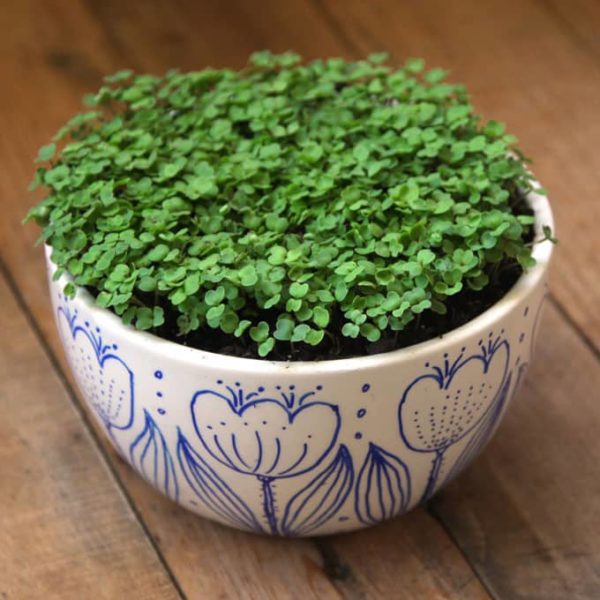

Watercress is a cold-loving plant and feels great at a temperature of + 15 ° С
In open ground, seeds are sown either before winter or in early spring, as soon as the soil has thawed. Even the first, most tender shoots of watercress are not afraid of frosts down to -5 ° C. He, along with parsley, rises first in the garden. It is a fast growing crop that outgrows and shoots out (throws out color). Therefore, in order to provide yourself with constantly fresh watercress, it is planted with regular sowing with a difference of two weeks.
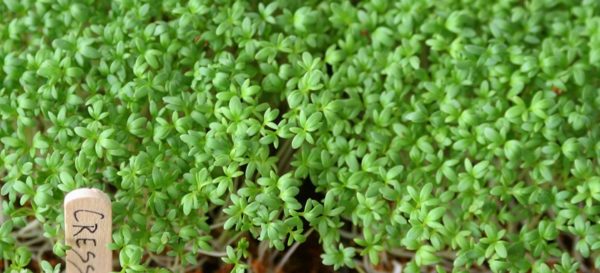

Watercress is one of the first to appear in the garden
How to collect seeds
Large, well-developed rosettes are left on the seeds. Dig them out of the ground when the leaf rosette begins to turn brown and hang them in a dry room with their flower heads down. To prevent the seeds from being lost, lay out paper or cloth.
Fully ripe and dried seeds are poured into bags made of natural fabric, stored in a cool dry place.
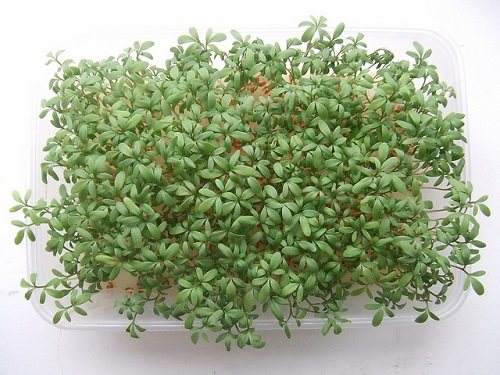

How to choose and store
The plant is sold in the market or on supermarket shelves. As you now know, watercress comes in different types and varieties, so its leaves are completely different. When buying greens, it is important to assess their quality by touch. It is necessary to ensure that the leaves are fresh, strong, whole, without holes and damage. Do not add sluggish or dried leaves to dishes, because the content of vitamins in them is reduced to a minimum. Strange spots or growths are a signal that the plant is sick. In no case should you buy it.
If you intend to use greens after a while, then it is best to wrap them in thick paper. If this is not possible, then you can take plastic bags, but you need to make small holes in them in advance so that the air flows inside. It is not worth washing the greens right away, because then it will begin to rot faster and will soon deteriorate. The best option for storing greens is a food container. In it, the leaves will not wrinkle much and will retain their beneficial properties for a long time. You need to store greens in the refrigerator. Once the leaves are plucked from the garden, they remain juicy for a week. Therefore, keeping the plant longer than 7 days does not make any sense.
Can I freeze
Of course, it is quite possible to freeze watercress. However, in the case of this plant, its leaves, which are taken out of the freezer in winter, will lose their beautiful appearance and extraordinary taste. Therefore, if you want to enjoy a crispy and juicy salad, then it will be better to grow greens on the windowsill all winter. It's easy and very convenient.
If you still want to freeze lettuce leaves, then this can be done in different ways:
- whole;
- finely chopped to a state of gruel;
- in small pieces, mixed with ice.
After thawing the watercress leaves in winter, it is very important to use them immediately after opening the containers. Secondary freezing will completely spoil the raw materials.
Can I dry
Any greens can be easily dried for the winter. Watercress is no exception. It's not hard. You will need:
- Carefully select the healthiest, youngest, undamaged and juicy leaves for drying.
- Carefully cut off the rhizomes of the plants.
- Rinse under clean water.
- Dry with a bucket.
- Put on paper towels.
- Wait for the plant to dry out.
- Then dry the leaves in the oven and place in a dark and cool place.
- Put the resulting mixture in a glass container and close tightly.
In winter, the leaves will not give the same smell as in summer. However, all the nutrients and minerals will remain and will saturate your body.
We advise you to read:
how to choose and store cilantro
To read

